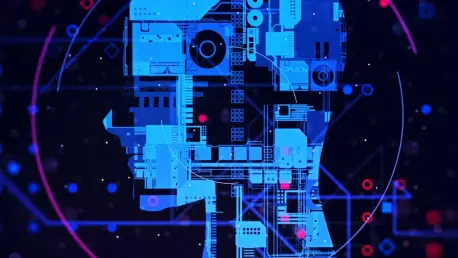As the integration of artificial intelligence (AI) agents into various sectors becomes increasingly prevalent, the need for robust security frameworks multiplies. These AI systems, with their capabilities of interpreting, adapting, and executing tasks autonomously, bring unprecedented efficiency and innovation. However, they also introduce new security challenges that demand immediate attention. Crafting a set of practical best practices becomes crucial to maximize their potential while minimizing risks. These guidelines aim to provide organizations with the necessary steps to ensure the security of AI agents amid evolving technological landscapes.
The Essentiality of Adopting Security Best Practices
AI agents, by their very nature, open up multiple attack vectors due to their complex, autonomous decision-making processes. Adhering to security best practices not only protects these systems but also enhances overall organizational efficiency, leading to significant cost savings and building trust with stakeholders. By implementing these practices, organizations can establish a security-first approach that aligns with their strategic goals and operational objectives. Moreover, a strengthened security posture encourages innovation by creating a safe environment for AI advancements.
Best Practices for Safeguarding AI Agents
A detailed exploration reveals key security measures critical for AI agent safety. Each practice is bolstered by examples illustrating their application in real-world scenarios.
Practice 1: Ensuring Robust Authentication and Authorization
Implementing a clear distinction between authentication and authorization is imperative for securing AI agents. The authentication process validates user identity, while authorization determines accessible resources. For instance, a prominent tech firm pioneered this separation by sending user identity information in HTTP headers, with the model’s output confined to the HTTP body. Such layers of verification ensure that unauthorized users cannot manipulate identity tokens, thus reinforcing security.
Practice 2: Validating AI Outputs
As AI agents generate outputs that influence critical decisions, validating these responses becomes essential. Similar to handling user input, AI outputs should undergo syntax verification and compliance checks against business rules. For example, in financial systems, this validation ensures data integrity and helps in detecting AI “hallucinations,” instances where AI might produce misleading information. Through automated reasoning, outputs are evaluated for accuracy and consistency, safeguarding data reliability.
Practice 3: Isolating Execution Environments
Isolating AI-generated code into protected environments mitigates risks associated with executing potentially harmful code. AI agents should never operate their generated code in unrestricted environments. For instance, sandbox environments can be employed to test AI outputs securely, as demonstrated by a case where sandboxing thwarted a potential breach attempt, maintaining operational security while exploring innovative solutions.
Practice 4: Enhancing Observability and Audit Logging
Tracking AI decision processes through comprehensive audit logging is another critical method to enhance security. Detailed logs of AI agent actions facilitate transparency, accountability, and diagnostic accuracy, especially in fields like healthcare. A case study from the healthcare sector illustrates how comprehensive audit logging of diagnostic decisions aids in maintaining integrity and trust in AI-driven healthcare systems.
Practice 5: Prioritizing Security Testing and Red Teaming
Evolving security testing methodologies, including red teaming strategies, are vital for identifying vulnerabilities in AI systems. Regular testing not only uncovers potential exploits but also adapts to new threats as they arise. In a notable example, red teams effectively identified weaknesses in AI systems, highlighting the significance of continuous, proactive security assessments.
Future Directions and Concluding Insights
Embedding robust security measures early in the AI development lifecycle emerged as a crucial practice. Organizations benefited from enhanced protection against breaches, which safeguards innovations and operational success. As AI agents continue integrating into various industries, a sustained commitment to security is necessary, ensuring trajectories of growth and innovation remain steady and secure.
By adopting these practices, organizations can confidently explore AI possibilities, secure in the knowledge that their systems are both innovative and protected. The landscape of AI presents boundless opportunities, but approaching it with a vigilant security mindset remains crucial for achieving sustainable advancements.









